Nestled amidst the picturesque Trikuta Mountains in the northern state of Jammu and Kashmir, the Vaishno Devi Temple is a sacred pilgrimage site that draws millions of devotees annually. This revered temple is dedicated to Goddess Vaishno Devi, an embodiment of the Hindu goddesses Mahakali, Mahalakshmi, and Mahasaraswati. The pilgrimage to Vaishno Devi is not just a physical journey but a spiritual odyssey that takes devotees through challenging terrains to seek the divine blessings of the Mother Goddess. In this comprehensive exploration, we delve into the temple timings, rituals, and the profound spiritual significance associated with the Vaishno Devi pilgrimage.
Entry Fee:
- No entry fee
- VIP Pass: Rs.500
Vaishno Devi Temple Darshan Timings
- Opening Time: 5:00 AM
- Morning Hours Time: 5:00 AM to 12:00 PM
- Evening Hours: 4:00 PM to 9:00 PM
- Break Hours: 12:00 PM to 4:00 PM
- Closing Timings: 9:00 PM
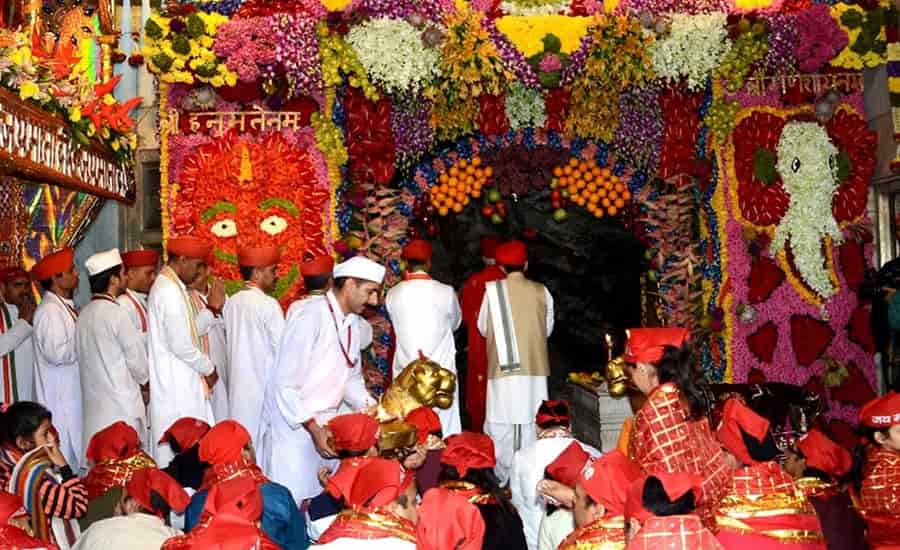
Historical Background
The history of Vaishno Devi Temple dates back to ancient times, shrouded in mythological legends and stories. It is believed that the goddess chose this sacred cave in the Trikuta Mountains as her abode. The legend narrates the tale of a young Vaishno, who undertook a penance to attain divine powers. The goddess decided to reside in the cave, where she transformed into a stone form to meditate and answer the prayers of her devotees.
Timings of Vaishno Devi Temple
The Vaishno Devi Temple is open throughout the year, and the pilgrimage season sees a surge in devotees during specific festivals and auspicious days. The temple timings may vary, and it is crucial for pilgrims to be aware of the schedule before embarking on their journey. The general timings are as follows:
- Morning Aarti: The temple gates usually open early in the morning, allowing devotees to attend the morning aarti. This serene ritual marks the beginning of the day, and the temple premises are filled with the soul-stirring chants and hymns dedicated to Goddess Vaishno Devi.
- Daytime Darshan: Pilgrims can visit the temple during the daytime for darshan, which involves witnessing the divine idol of the goddess. The day offers a chance to explore the natural beauty surrounding the temple and connect with the spiritual vibrations of the sacred space.
- Evening Aarti: As the day draws to a close, the evening aarti takes place, creating an ethereal atmosphere as the temple is illuminated by the glow of lamps and the fervent devotion of the devotees.
- Nighttime Darshan: For those seeking a unique and mystical experience, the temple is open for nighttime darshan on certain days. The nighttime pilgrimage adds an extra layer of spirituality to the journey, with the mountains shrouded in darkness and the temple glowing with the divine aura.
Rituals at Vaishno Devi Temple
The rituals at Vaishno Devi Temple are deeply rooted in ancient traditions and hold profound significance for the devotees. Each ritual is a symbolic expression of devotion, purity, and surrender to the divine. Some of the prominent rituals include:
- Aarti: The aarti at Vaishno Devi Temple is a mesmerizing spectacle. Devotees gather to witness the rhythmic chanting, ringing of bells, and the offering of lamps to the goddess. The aarti symbolizes the worshipper’s gratitude, love, and reverence for the divine.
- Prasad Offering: Offering prasad (sanctified food) to the goddess is an integral part of the pilgrimage. Devotees bring offerings like fruits, sweets, and other vegetarian items as a token of their devotion. The prasad is believed to carry the blessings of the goddess.
- Charan Paduka Darshan: The journey to Vaishno Devi involves the sacred darshan of the “Charan Paduka,” which refers to the holy foot imprints of the goddess. Pilgrims consider this as a symbolic act of touching the feet of the deity, seeking her divine grace and guidance.
- Havan (Sacred Fire Ritual): Some devotees choose to perform havan, a sacred fire ritual, as a part of their pilgrimage. The havan involves offering ghee, grains, and sacred herbs into the fire while chanting Vedic mantras. It is believed to purify the surroundings and invoke divine blessings.
Spiritual Significance of Vaishno Devi Pilgrimage
Undertaking the pilgrimage to Vaishno Devi is not merely a physical journey but a spiritual sojourn that transcends the boundaries of worldly existence. The spiritual significance lies in several aspects:
- Purification of the Soul: The arduous trek through the mountains and the act of surrendering to the divine at the cave are seen as a means of purifying the soul. Pilgrims believe that the challenging journey is a test of their faith and determination.
- Blessings of Goddess Vaishno Devi: Devotees embark on this pilgrimage to seek the blessings of Goddess Vaishno Devi for health, prosperity, and well-being. The belief in the transformative power of the goddess inspires pilgrims to undertake the challenging trek with unwavering faith.
- Renewal of Faith: The pilgrimage is an opportunity for devotees to renew their faith and strengthen their connection with the divine. The serene surroundings, coupled with the rituals and prayers, create a conducive environment for spiritual introspection and renewal.
- Karma Cleansing: Many pilgrims view the Vaishno Devi Yatra as a way to cleanse themselves of past sins and negative karma. The physical and mental challenges faced during the journey are considered a form of penance and purification.
Precautions and Tips for Pilgrims
Embarking on the Vaishno Devi Yatra requires careful planning and consideration of various factors. Pilgrims should keep in mind the following precautions and tips:
- Physical Fitness: The trek to Vaishno Devi involves steep inclines and challenging terrains. Pilgrims should ensure they are physically fit to undertake the journey. Regular exercise and consultation with a healthcare professional are advisable.
- Weather Conditions: The weather in the Trikuta Mountains can be unpredictable. Pilgrims should check the weather forecast and be prepared for variations in temperature. Carrying appropriate clothing, including warm layers and rain gear, is essential.
- Footwear: Comfortable and sturdy footwear is crucial for the trek. Pilgrims should choose footwear that provides good grip and support, considering the rocky and uneven paths.
- Provisions: Carrying sufficient water, snacks, and basic medical supplies is recommended. There are several points along the trek where pilgrims can rest and purchase essentials, but having personal provisions is advisable.
- Accommodation: Accommodation options are available at various points along the pilgrimage route. It is advisable to book accommodation in advance, especially during peak pilgrimage seasons.
- Respect for Nature: Pilgrims should maintain a respectful attitude towards the natural surroundings. Littering is strictly prohibited, and eco-friendly practices should be followed to preserve the pristine beauty of the mountains.
Conclusion
The journey to the Vaishno Devi Temple is a sacred expedition that combines physical endurance with spiritual fervor. The temple timings and rituals are integral to the overall pilgrimage experience, offering devotees the opportunity to connect with the divine in a profound and transformative manner. As pilgrims tread the path to the holy cave, they not only seek the blessings of Goddess Vaishno Devi but also embark on a spiritual odyssey that rejuvenates the soul and strengthens the bond between the mortal and the divine. The Vaishno Devi Yatra, with its rich history, rituals, and spiritual significance, stands as a testament to the enduring faith of millions who embark on this divine journey year after year.

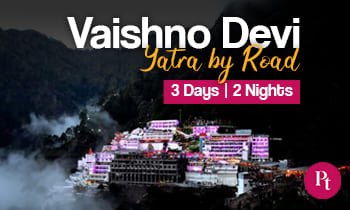

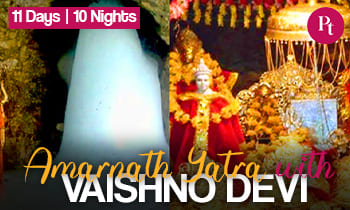
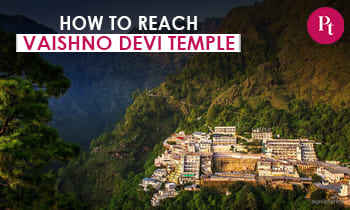
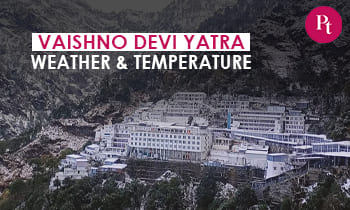

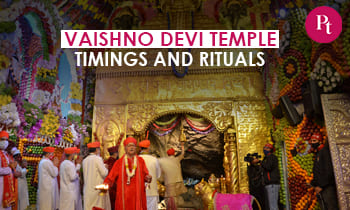
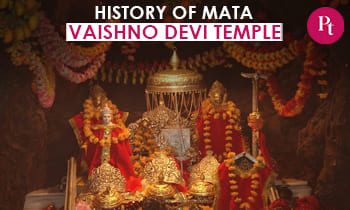
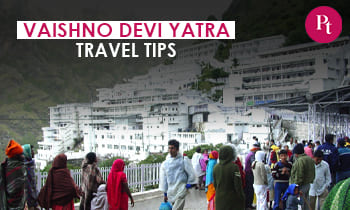
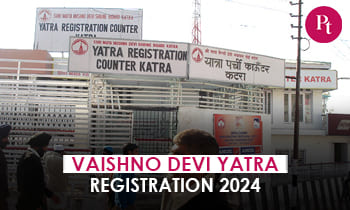
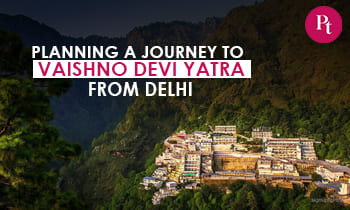

 Call
Call WhatsApp
WhatsApp Enquiry
Enquiry
Till what time is Mata Vaishno Devi temple open
क्या वहां पर जनेऊ संस्कार किया जाता है?